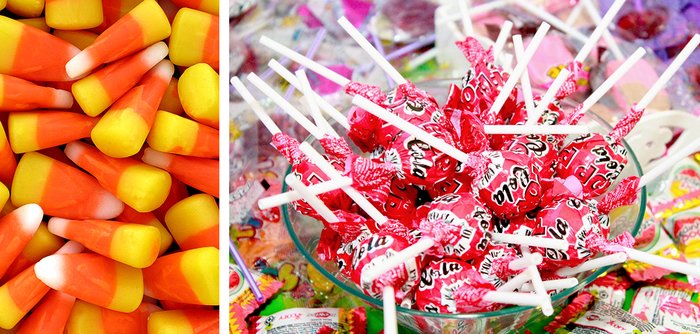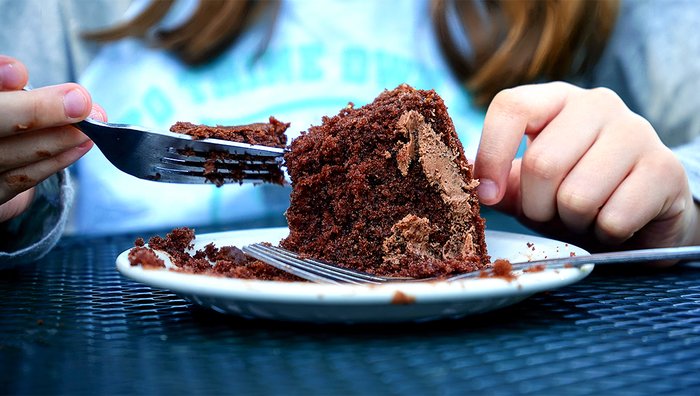If you're out on Halloween night, you'll see bedraggled parents traipsing after clusters of goblins, princesses, hobos, Biebers, and the cast of "Duck Dynasty." However, those trick-or-treat characters will be trumped in number by this year's most common—and all too real—sighting: the obese child.
Trick or treating is a tradition going back a hundred years or so in the United States, and it probably seemed like a good idea at the time. It turns out that the trick was on us, given the growing threat from type 2 diabetes. As recently as 2000, the proportion of kids ages 12 to 19 with diabetes or prediabetes stood at 9 percent. (Prediabetes is the zone of blood glucose scores sandwiched between normal glucose metabolism and diabetes.) By 2007-2008, that figure had risen to 23 percent, according to the Centers for Disease Control and Prevention (CDC). It's a safe bet that it's been similarly rising since then.
The "why" behind these stats is no mystery, but unfortunately that doesn't mean we've gotten any better at fixing the problem. So let's pull the mask away from these stats and recognize our toxic sugar-crazed lifestyles for what they are.
Sugar By The Bagful
Type 2 diabetes and obesity have a bit of a chicken-and-egg relationship, and various arguments have been put forth for each as the trigger for the other. In any event, they tend to show up together as partners in crime. The CDC also tells us that obesity has more than doubled in children and tripled in adolescents in the past 30 years.
Sugar isn't solely to blame for these scary stats, but it plays a key role in overwhelming the glucose metabolism of our young people. Compounding matters greatly are the other processed carbs that quickly meet the same fate as sugar, elevating blood glucose just as surely as a Snickers bar does.

Sugar helps make kids overweight and obese. That much is clear.
Back in 2010, researchers at the University of North Carolina at Chapel Hill determined that 27 percent of the calories for kids between ages 2 and 18 were coming from candy, chips, and other snack foods. Aside from the caloric pile-up, the insulin surges these fast-acting carbs promote the creation and storage of excess body fat.
Sugar helps make kids overweight and obese. That much is clear. But increased sugar in a population's food supply has also been linked to higher diabetes rates even when you set aside the obesity factor.
Along with obesity and too much sugar, lack of physical activity also plays a major role in making our children into metabolic zombies. Kids still like trick-or-treating—they just don't like the walking door-to-door part.
Close The Door
In many ways Halloween has become ground zero for this meltdown. The National Confectioners Association estimates that Americans bought 600 million pounds of candy for Halloween this year, at a cost of $2.4 billion. Roughly 4 percent of the candy consumed in the United States each year is consumed on that one day.

Americans bought 600 million pounds of candy for Halloween this year, at a cost of $2.4 billion.
If only the sugar-fest actually only lasted one night. Supermarkets, offices, and homes are filled with the sweet stuff in the days leading up to the holiday, and kids are left with a month's supply of sugary treats in its aftermath. This sets the table for more unrestrained junk food feasting at Thanksgiving and Christmas, followed by some annual resolutions that strive in vain to undo the damage.
Another survey by the National Confectioners Association found that the whole family usually gets into the act, too. "Across America 55 percent of households have a family rule that Halloween candy must be shared by everyone, further demonstrating that sharing is caring," they reported. Caring, indeed.
The financial burden from our collective sugar-binge is staggering. A study in the ADA journal "Diabetes Care" estimated the total economic tab of diagnosed diabetes in 2012 at $245 billion, up 41 percent from their previous estimate. The price tag decades from now will be mind-boggling, if current trends continue.
Halloween was once a pagan holiday celebrating death, and that association once again seems appropriate, given the toxic effects of excessive sugar inside the human body. Pumpkins can still be carved, costumes can still be worn, parties can still be held, and kids can be rewarded with experiences rather than candy. But trick-or-treating? That should be mothballed like last year's "Jersey Shore" get-ups, before the only types of trick-or-treaters are Type 1 and Type 2.
The Unsweetened Truth
On my Twitter feed @sugar_nation, some critics have written that I want to rob kids of their childhood. Actually, I just don't want to see them robbed of their limbs and organs later in life—and "later" is far sooner than it's ever been before.

Now, with teens developing type-2 diabetes, are they going to have heart disease at 25 and need a transplant in their 30s?
"People used to suffer diabetes in their 60s and heart disease in their 70s," says James O. Hill, Ph.D., director of the Center for Human Nutrition at the University of Colorado Health Sciences Center. "Now, with teens developing type-2 diabetes, are they going to have heart disease at 25 and need a transplant in their 30s? We've never gone through this before, but based on what we know about what happens once you have type-2 diabetes, the answer is probably yes."
So who can we count on to deliver the hard truth? You would think the American Diabetes Association would warn against too much sugar at Halloween on their website.
Instead, they offer to help you "plan how you'll handle the extra carbs from your favorite Halloween treats." If our largest national diabetes organization—I won't say leading, because they don't lead—doesn't have the resolve and clarity of mission to tell millions of fat kids to just put down the freaking candy bars and stop eating sugar already, then who will?
I will. This year, I'm considering dressing up as Carmella Soprano's therapist from the TV show "The Sopranos." He's a minor character memorable only for a single brief rant of tough love. At the end, he tells his patient simply, "[There's] one thing you can never say: That you haven't been told." Now you can't say that, either.

